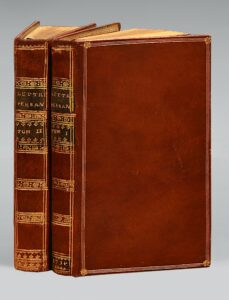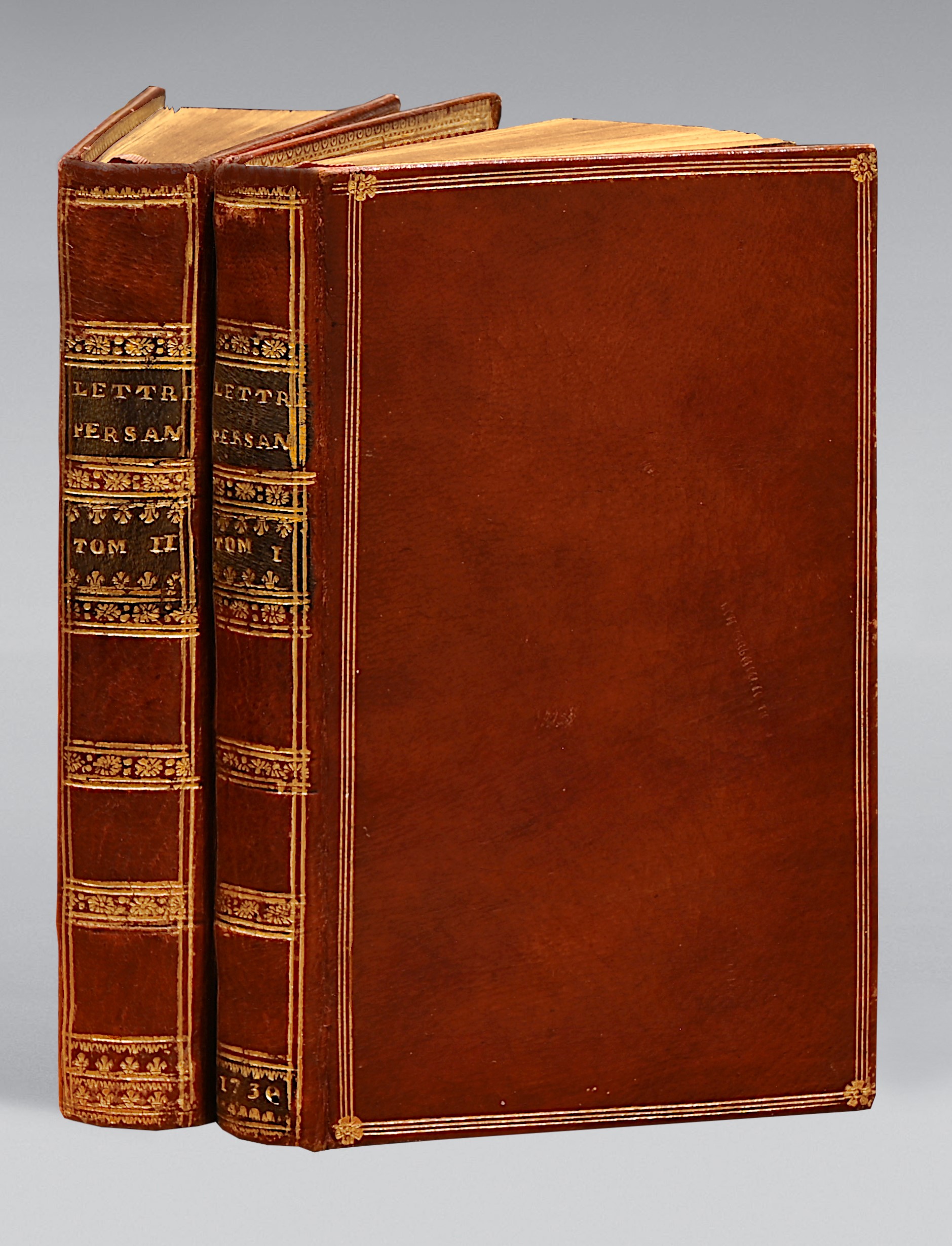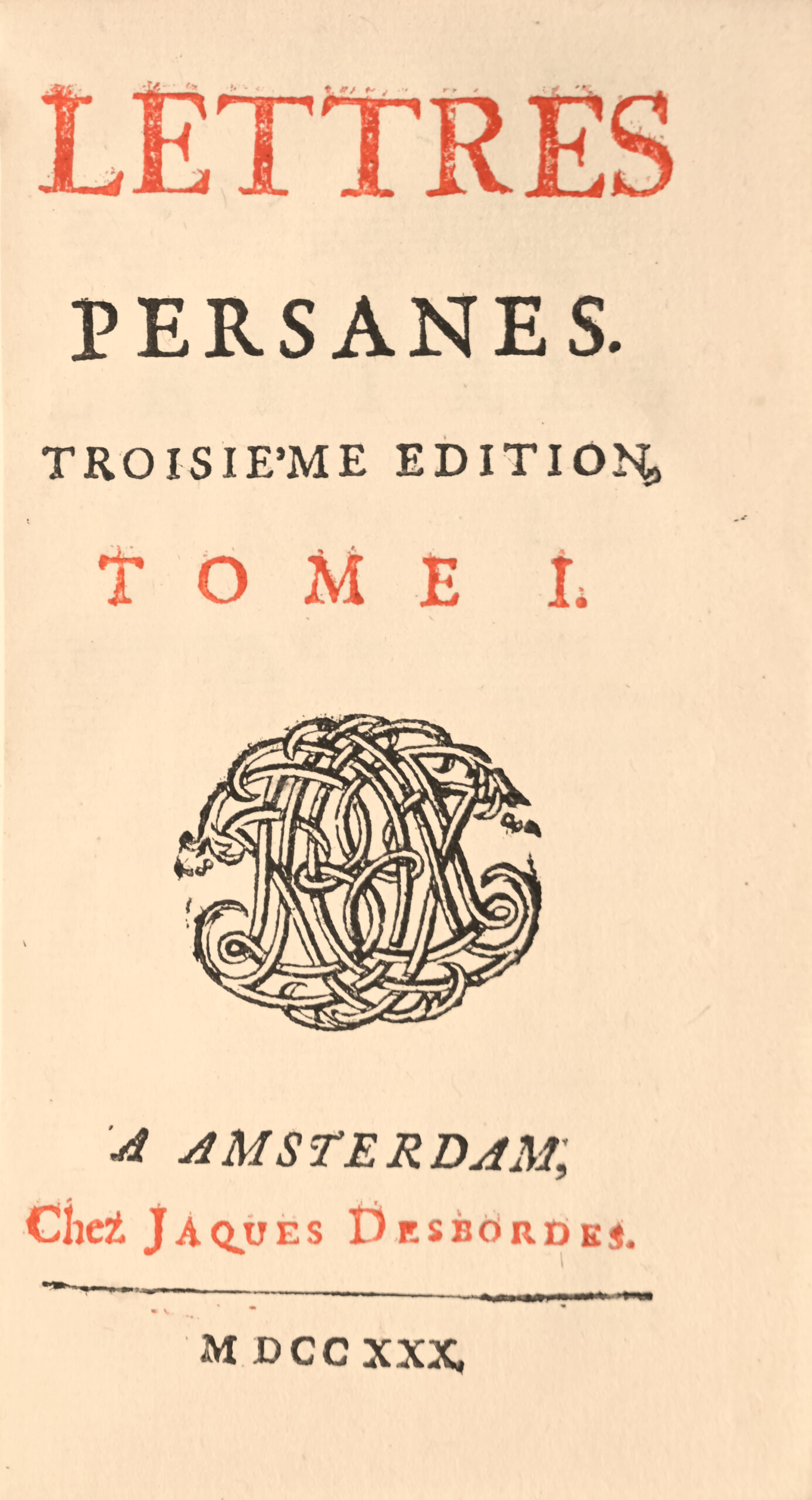Amsterdam, chez Jacques Desbordes, 1730.
2 vols. 12mo : 1 bl. l. and 312 numbered pages for volume I ; 347 numbered pages for volume II.
Full red morocco, triple gilt fillet on the covers, decorated flat spines, green morocco lettering-pieces, gilt date on a green morocco piece at the foot of the spine of the first volume, inner gilt border, gilt edges. Contemporary binding.
133 x 74 mm.
“Third original edition” (Rochebilière, 776).
The success of this bold book, which challenged all the preconceived ideas and shortcomings of society at that time, was huge.
“If we leave aside the oriental intrigue, we must remember that the “ Lettres persanes ” constitute an extremely lively, malicious and witty picture of the time. In his criticism of institutions, in the comparative study of political regimes and mores, in his sociological views, he reveals the best of himself: these are the bold, new views to which he introduced his contemporaries and which still seem so original to us, views of which he was to give perfect expression in the ” Considérations” and “ L ‘Esprit des lois “.
Despite the anonymous nature of the work, despite its violence and impertinence, it was the “Persian Letters” that opened the doors of the Académie Française to him in 1727.
This genre, which he did not create, but which he was able to impose, enjoyed a brilliant fortune throughout the eighteenth century; suffice it to mention two quite opposite writers, Voltaire and Chateaubriand, who tried their hand at it, the first in “L’Ingénu”, the second in “Les Natchez”.
This third original edition differs entirely from the first and its copies, the order of the Letters is not the same, the first Letter of this edition was previously the sixth, and there are ten less.
It reproduces page by page, line by line the second original, about which Louis Vian gave interesting details.
“Could it be this edition (the second) of which Voltaire speaks, where Montesquieu made changes in order to enter the Academy? This seems highly probable, and Mr. Vian’s research leaves little doubt in this regard. This edition would have been backdated for the needs of the future academician. The typefaces and fleurons are exactly the same as those used for the third edition of Holland, which was published in 1780 and which the author confessed to.
This second edition is so rare that M. Vian had long believed that his copy was unique (Rochebilière).
Precious and gorgeous copy bound for Chrétien-François II de Lamoignon, marquis of basville, baron of Saint-Yon, son of Chrétien-Guillaume, president at the Parlement of Paris and of Madeleine-Henriette Bernard, born on December 18, 1735, became councillor at the same parlement as his father in September 1755, then was appointed president à mortier in April 1758. After being exiled with the whole Parliament in 1772. He became Chancellor and Superintendent of Finances of the Order of the Holy Spirit and Keeper of the Seals of France in April 1787, following Miromesnil, but had to retire on 14 September 1788. He died in Basville in May 1789. He had married on 13 April 1758 Marie-Elisabeth Berrier, daughter of the Lieutenant General of Police.
Enthralled by the love of books, which was hereditary in his family, the Chevalier de Lamoignon increased the very important library founded by Guillaume de Lamoignon with that of his father-in-law, Berryer, former Keeper of the Seals; at his death, the majority of these books were sold en bloc to English booksellers.
Chrétien-François developed the library he inherited, and had his bookbinder, Enguerrand, bind his new acquisitions, recent or not, according to his instructions.
The binding is usually in morocco, with a flat spine. On the covers, a triple gilt fillet, with a rose in the corner.
In addition to the morocco lettering-piece, there is also a morocco tail-piece. This piece often bears the date. For books in several volumes, the tail piece is usually only present on the first volume.



